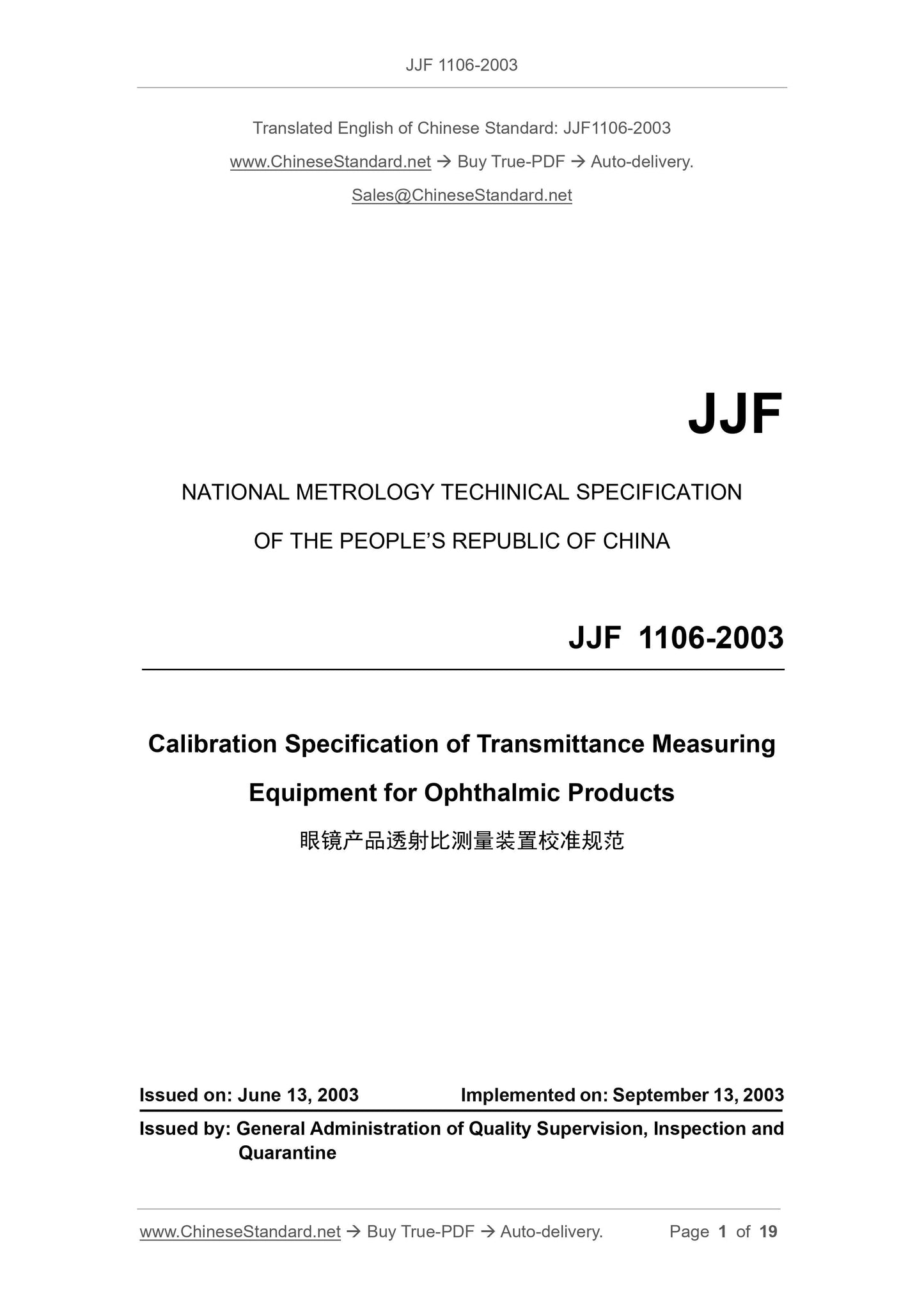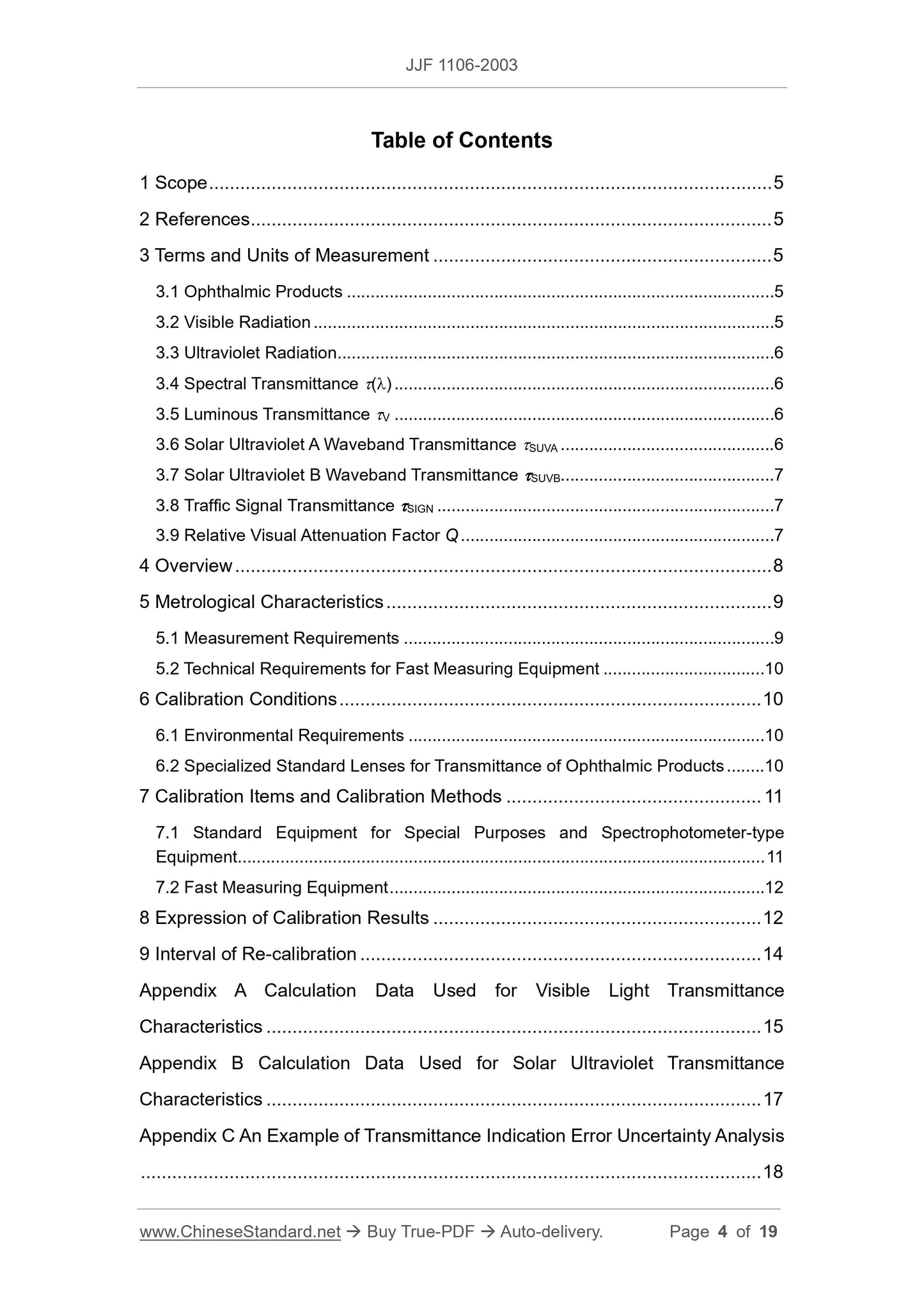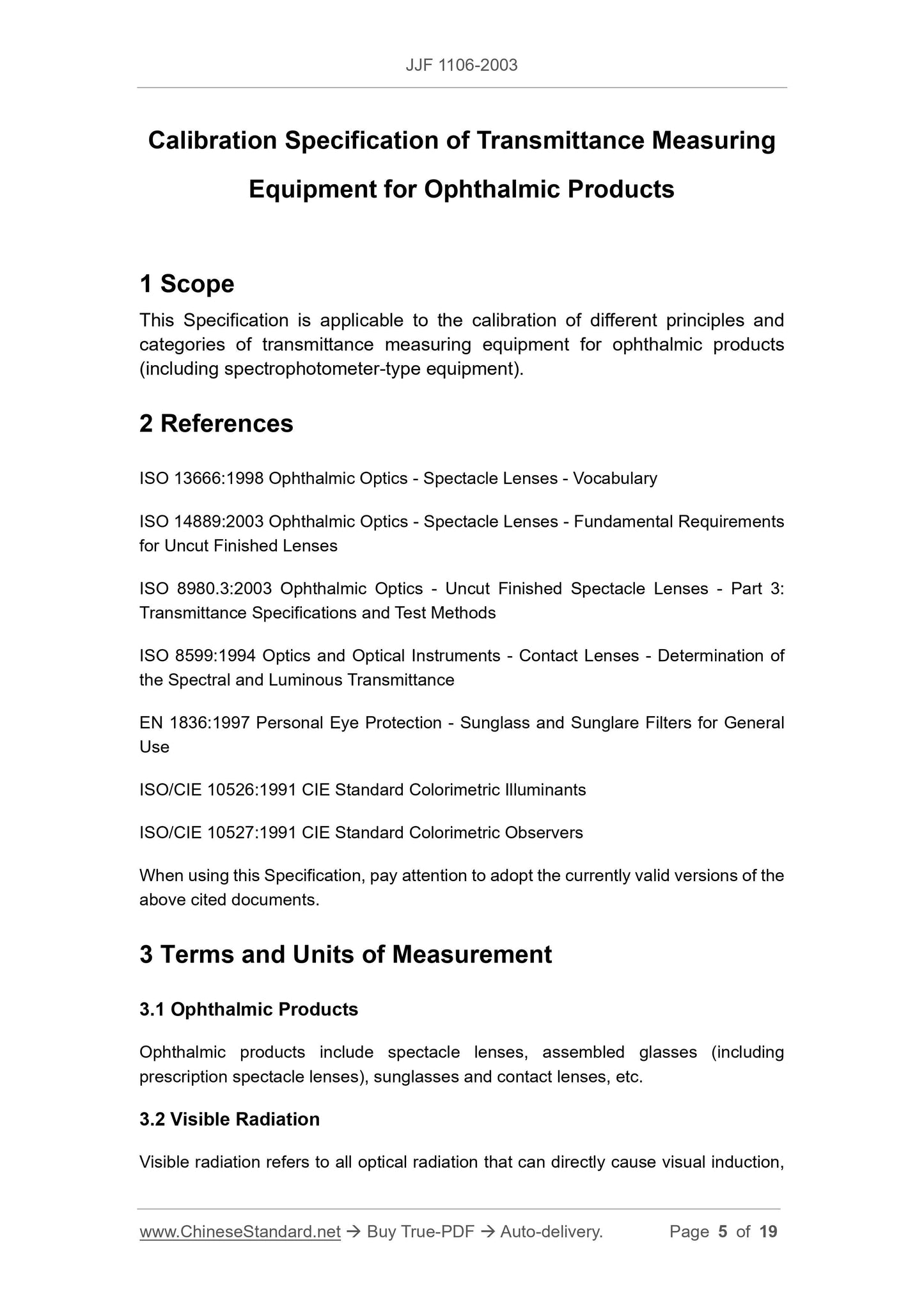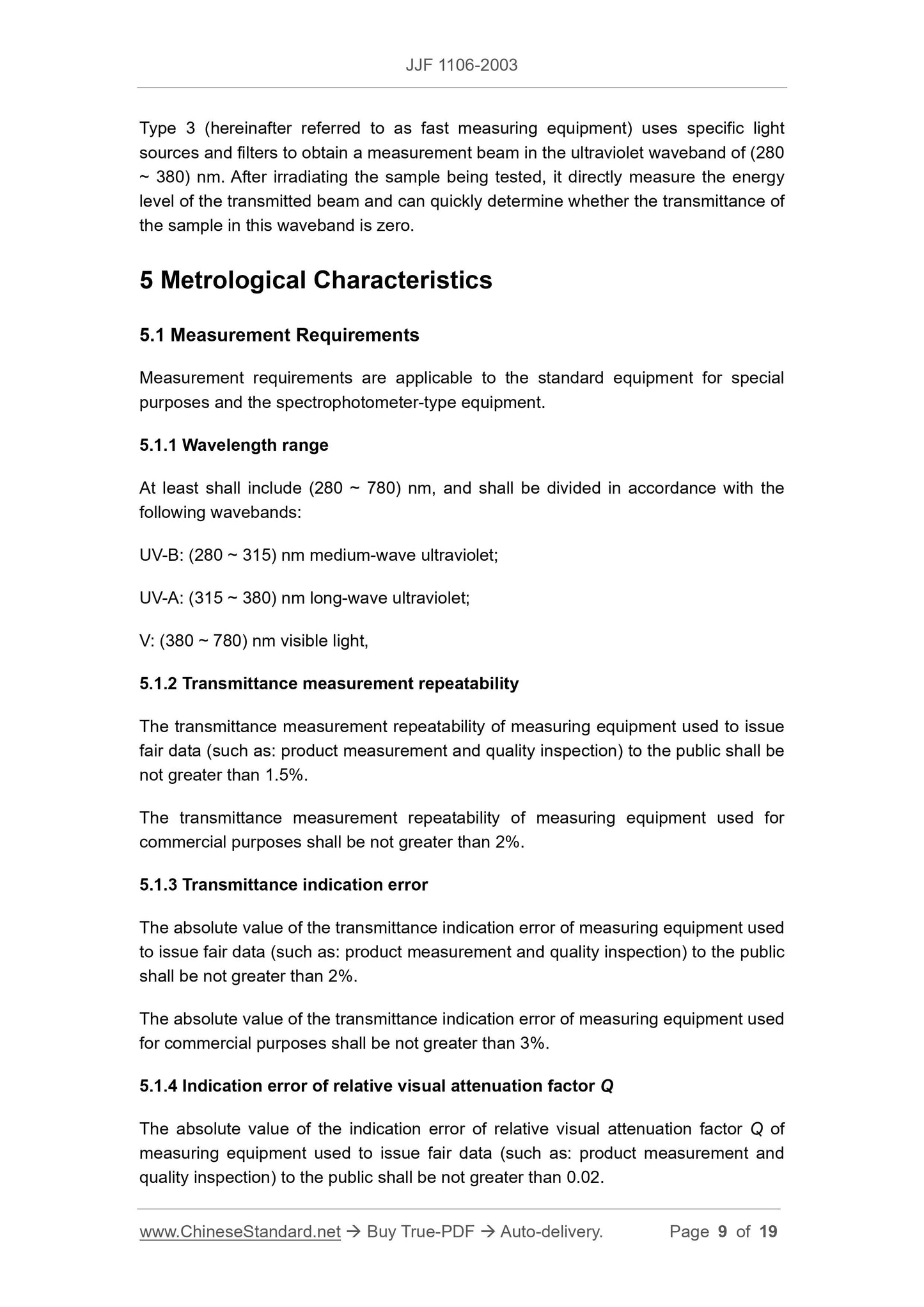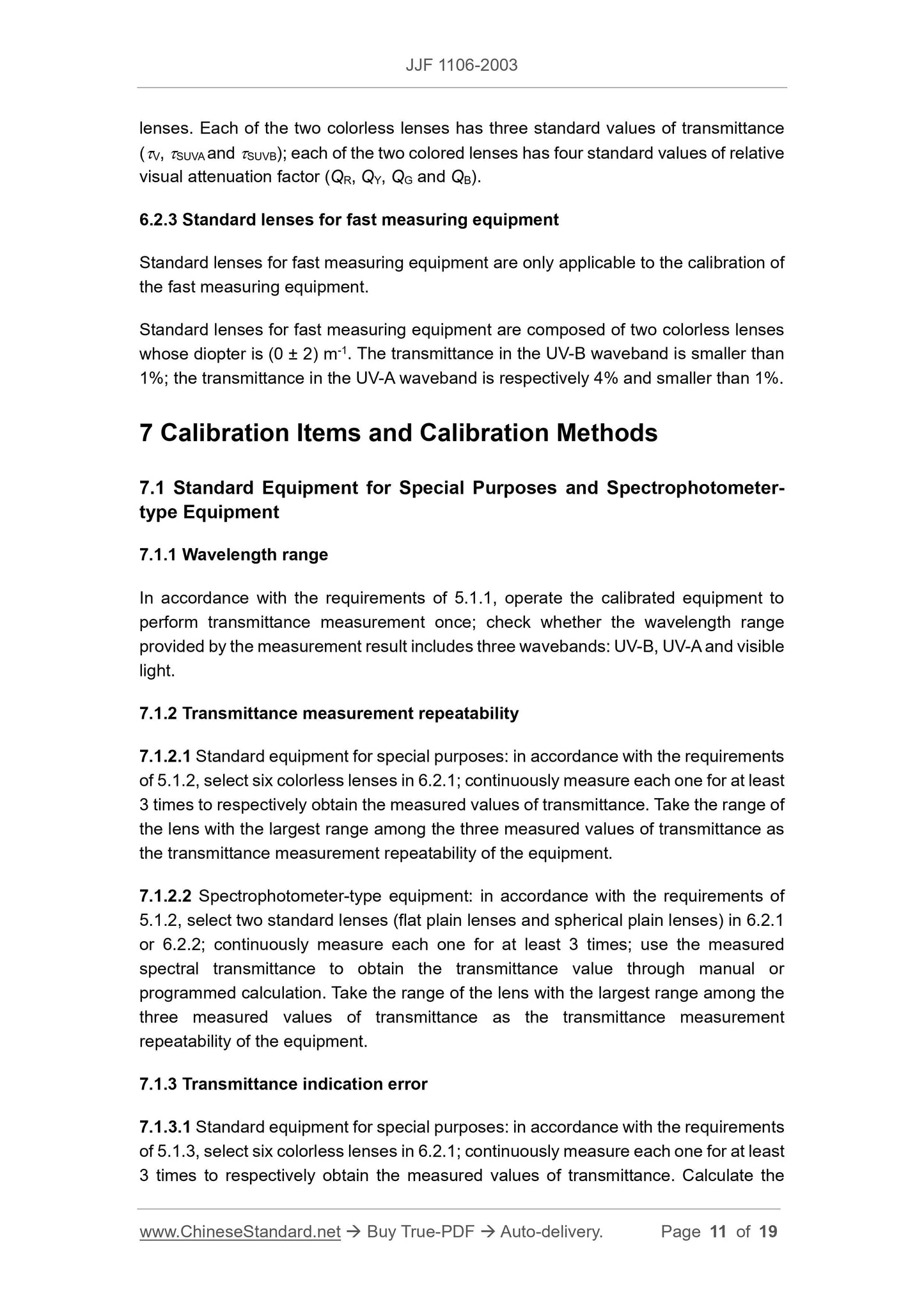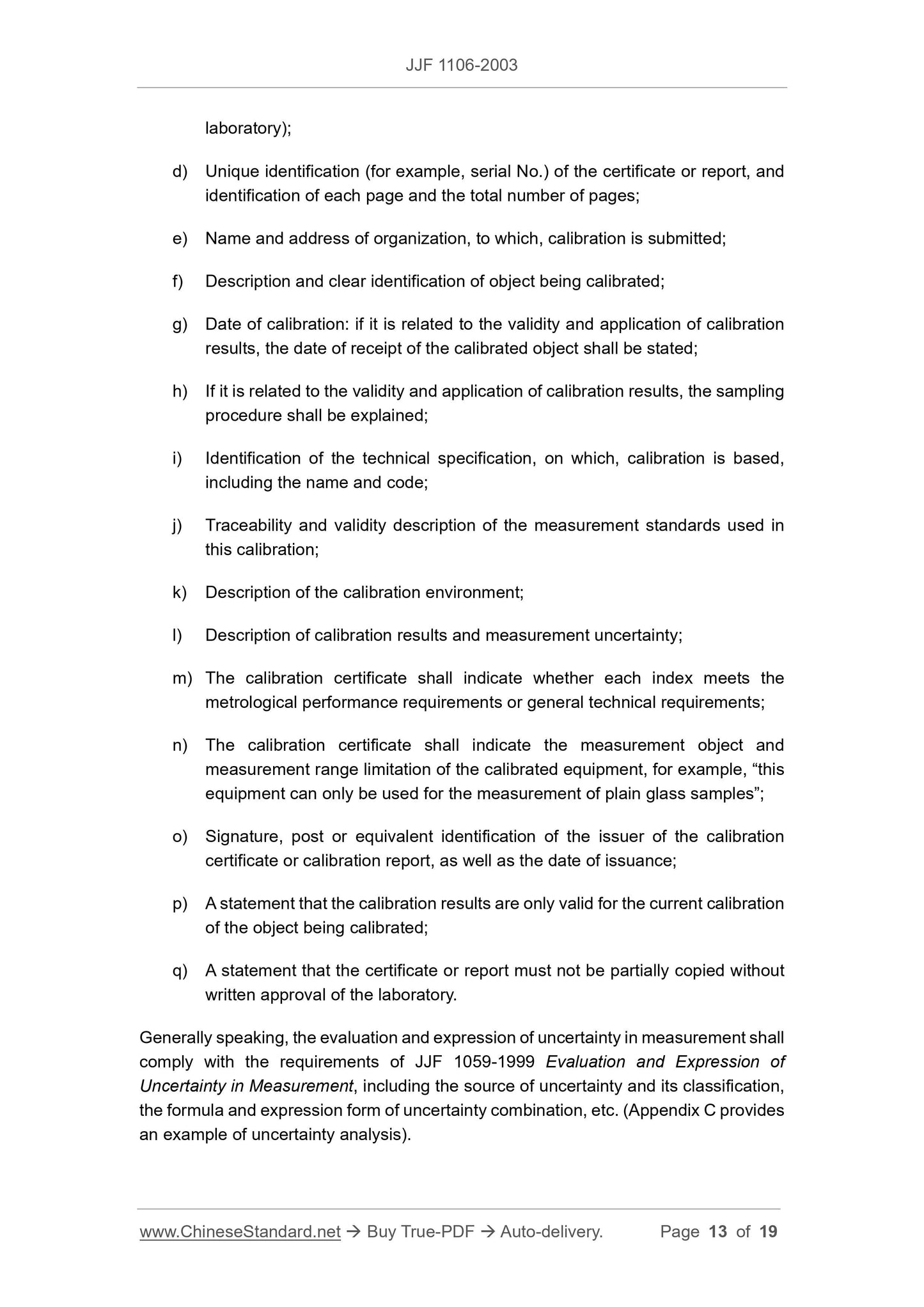1
/
of
6
www.ChineseStandard.us -- Field Test Asia Pte. Ltd.
JJF 1106-2003 English PDF
JJF 1106-2003 English PDF
Regular price
$220.00
Regular price
Sale price
$220.00
Unit price
/
per
Shipping calculated at checkout.
Couldn't load pickup availability
JJF 1106-2003: Calibration Specification of Transmittance Measuring Equipment for Ophthalmic Products
Delivery: 9 seconds. Download (and Email) true-PDF + Invoice.Get Quotation: Click JJF 1106-2003 (Self-service in 1-minute)
Newer / historical versions: JJF 1106-2003
Preview True-PDF
Scope
This Specification is applicable to the calibration of different principles andcategories of transmittance measuring equipment for ophthalmic products
(including spectrophotometer-type equipment).
Basic Data
| Standard ID | JJF 1106-2003 (JJF1106-2003) |
| Description (Translated English) | Calibration Specification of Transmittance Measuring Equipment for Ophthalmic Products |
| Sector / Industry | Metrology and Measurement Industry Standard |
| Classification of Chinese Standard | A60 |
| Word Count Estimation | 10,157 |
| Date of Issue | 2003-06-13 |
| Date of Implementation | 2003-09-13 |
| Quoted Standard | ISO 13666-1998; ISO 14889-2003; ISO 8980-3-2003; ISO 8599-1994; EN 1836-1997; ISO/CIE 10526-1991; ISO/CIE 10527-1991 |
| Issuing agency(ies) | State Administration of Quality Supervision, Inspection and Quarantine |
| Summary | This standard applies to: a variety of different principles, different categories glasses transmittance measurement device Calibration (including spectrophotometer class device). |
Share
